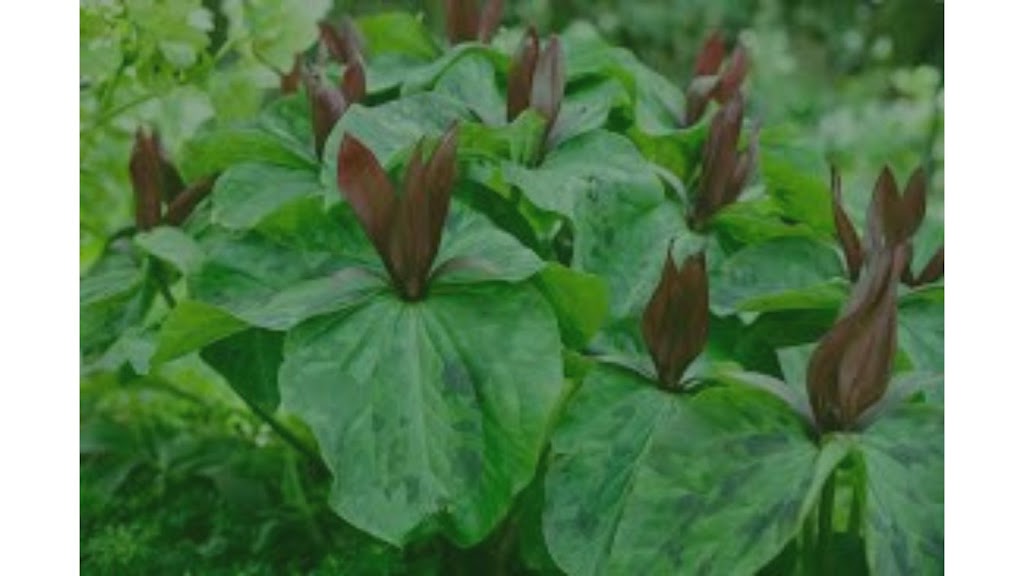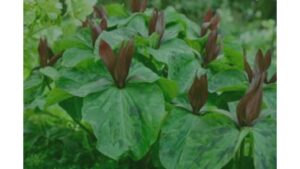Homeopathic Medicine Trillium: A Comprehensive Guide
Introduction
Homeopathy, a holistic approach to healthcare, utilizes
natural substances to stimulate the body’s self-healing processes. One such
remedy is Trillium, derived from the plant Trillium pendulum. This article
delves into the origin, extraction process, potencies, symptoms it addresses,
uses, potential side effects, and preventive measures associated with Trillium.
Origin of Trillium
Trillium, commonly known as Bethroot, Birthroot, or
Wake-robin, is a perennial herb native to North America. It belongs to the
Liliaceae family and is characterized by its three-petaled flowers and large,
whorled leaves. The plant has a rich history of use in traditional medicine by
Native American tribes, who utilized it for various medicinal purposes,
including treating wounds, menstrual issues, and respiratory conditions.
In homeopathy, Trillium pendulum is primarily used to
address gynecological and hemorrhagic conditions. Its introduction into
homeopathic practice dates back to the 19th century when practitioners began to
recognize its potential in treating specific symptoms.
Extraction Process
The preparation of Trillium for homeopathic use involves a
meticulous process to ensure the remedy’s potency and safety:
- Harvesting:
The root of the Trillium plant is harvested, usually during the spring or
autumn when the plant’s medicinal properties are most potent. - Tincture
Preparation: The fresh root is cleaned, chopped, and macerated in
alcohol to create a mother tincture. This mixture is allowed to stand for
several weeks, during which the alcohol absorbs the active compounds from
the plant material. - Potentization:
The mother tincture undergoes a process of serial dilution and succussion
(vigorous shaking) to create various potencies of the remedy. Each
dilution step involves mixing a specific ratio of tincture to alcohol or
water, followed by succussion to enhance the remedy’s therapeutic
properties. - Selection
of Potencies: Trillium is available in a range of potencies, such as
6X, 30C, 200C, and higher. The appropriate potency is chosen based on the
individual’s symptoms and the homeopath’s discretion.
Symptoms Addressed by Trillium
Trillium is primarily indicated for conditions related to
bleeding and gynecological issues. The primary symptoms addressed by Trillium
include:
Hemorrhagic Conditions
- Uterine
Hemorrhage: Profuse uterine bleeding, especially in cases of
menorrhagia (heavy menstrual bleeding) and metrorrhagia (bleeding between
periods). - Postpartum
Hemorrhage: Excessive bleeding following childbirth, often accompanied
by a feeling of faintness or exhaustion. - Nosebleeds:
Recurrent or severe nosebleeds, particularly when associated with other
bleeding tendencies.
Gynecological Conditions
- Dysmenorrhea:
Painful menstrual cramps, often with heavy bleeding and clotting. - Menstrual
Irregularities: Irregular menstrual cycles, with periods that are
either too frequent or too prolonged. - Prolapse
of the Uterus: Symptoms associated with uterine prolapse, such as a
dragging sensation in the pelvic region and backache.
Other Conditions
- Varicose
Veins: Enlarged and painful veins, particularly in the legs, which may
be associated with a tendency to bleed easily. - Hemorrhoids:
Painful, swollen veins in the rectal area, often with bleeding during
bowel movements.
Uses of Homeopathic Medicine Trillium
Trillium has diverse applications in homeopathy, making it a
valuable remedy for various conditions. Some of the key uses of Trillium
include:
Gynecological and Hemorrhagic Conditions
- Menorrhagia
and Metrorrhagia: Trillium is highly effective in managing heavy
menstrual bleeding and bleeding between periods. It helps reduce the flow,
alleviate associated pain, and restore regular menstrual cycles. - Postpartum
Hemorrhage: Trillium is used to control excessive bleeding following
childbirth, providing relief from exhaustion and promoting faster
recovery. - Dysmenorrhea:
For women experiencing painful menstrual cramps, Trillium offers
significant relief by reducing pain and moderating the flow of menstrual
blood.
Vascular Conditions
- Varicose
Veins: Trillium helps alleviate the discomfort and pain associated
with varicose veins. It also addresses the tendency to bleed easily, which
is common in individuals with this condition. - Hemorrhoids:
Trillium is beneficial for treating hemorrhoids, particularly those that
bleed during bowel movements. It helps reduce pain, swelling, and
bleeding.
Additional Uses
- Nosebleeds:
Trillium can be used to manage recurrent nosebleeds, especially when they
are associated with other bleeding tendencies. - Prolapse
of the Uterus: Trillium helps manage symptoms of uterine prolapse,
such as a dragging sensation and backache, providing support and relief to
affected women.
Side Effects of Trillium
While homeopathic remedies like Trillium are generally
considered safe when used as directed, there can be some rare side effects and
reactions:
Potential Side Effects
- Homeopathic
Aggravation: Some individuals may experience a temporary worsening of
symptoms, known as homeopathic aggravation, before experiencing
improvement. This is generally short-lived and indicates that the remedy
is working. - Allergic
Reactions: Although rare, allergic reactions to Trillium or its
components may occur in sensitive individuals. Symptoms may include skin
rashes, itching, or swelling. - Digestive
Upset: In some cases, Trillium may cause mild digestive upset, such as
nausea or stomach discomfort.
Preventive Measures
- Consultation
with a Homeopath: It is essential to consult a qualified homeopath for
proper diagnosis and treatment guidance, especially if using Trillium for
chronic or serious conditions. - Correct
Potency and Dosage: Following the prescribed potency and dosage
instructions is crucial to minimize the risk of side effects and ensure
optimal therapeutic benefits. - Monitoring
and Follow-Up: Regular monitoring and follow-up with a homeopath can
help track progress and adjust the treatment plan as needed.
FAQs about Homeopathic Medicine Trillium
Q1: What is Trillium in homeopathy?
A1: Trillium, also known as Trillium pendulum or
Bethroot, is a homeopathic remedy derived from the root of the Trillium plant.
It is commonly used to address gynecological issues and hemorrhagic conditions.
Q2: How is Trillium prepared for homeopathic use?
A2: Trillium is prepared by harvesting the root of
the Trillium plant, which is then cleaned, chopped, and macerated in alcohol to
create a mother tincture. This tincture is subsequently diluted and succussed
through a process known as potentization to produce various potencies of the
remedy.
Q3: What conditions can Trillium treat?
A3: Trillium is primarily indicated for conditions
such as heavy menstrual bleeding (menorrhagia), bleeding between periods
(metrorrhagia), postpartum hemorrhage, dysmenorrhea (painful periods), varicose
veins, hemorrhoids, and uterine prolapse.
Q4: How is Trillium administered?
A4: Trillium is typically administered orally in the
form of lactose pellets or liquid dilutions. The specific dosage and potency
are determined by a homeopath based on the individual’s symptoms and overall
health.
Q5: Is Trillium safe for long-term use?
A5: When used under the guidance of a qualified
homeopath, Trillium is generally safe for long-term use. Regular monitoring by
a homeopath is recommended to ensure the remedy remains effective and to make
any necessary adjustments.
Q6: Can Trillium be used for children?
A6: While Trillium is primarily used for
gynecological and hemorrhagic conditions in adults, it can be prescribed for
children under specific circumstances and conditions. A consultation with a
qualified homeopath is necessary to determine its suitability and appropriate
dosage for children.
Q7: Are there any side effects of using Trillium?
A7: Homeopathic remedies like Trillium are generally
safe when used as directed. However, some individuals may experience a
temporary worsening of symptoms (homeopathic aggravation) or rare allergic
reactions, such as skin rashes or digestive upset.
Q8: Can Trillium be used alongside conventional
treatments?
A8: Trillium can often complement conventional
treatments, but it is essential to consult with both a homeopath and a
conventional healthcare provider to ensure compatibility and avoid potential
interactions.
Q9: How long does it take for Trillium to work?
A9: The time it takes for Trillium to work varies
depending on the individual’s condition, overall health, and response to the
remedy. Some individuals may notice improvements within days or weeks, while
chronic conditions may require longer-term treatment.
Q10: Is Trillium effective for treating heavy menstrual
bleeding?
A10: Yes, Trillium is particularly effective in
treating heavy menstrual bleeding (menorrhagia) and bleeding between periods
(metrorrhagia). It helps regulate the menstrual cycle and reduce excessive
blood flow.
Q11: Can Trillium be used for postpartum hemorrhage?
A11: Yes, Trillium can be used to manage postpartum
hemorrhage by controlling excessive bleeding and promoting faster recovery
after childbirth.
Q12: Are there any dietary restrictions while taking
Trillium?
A12: There are typically no specific dietary
restrictions associated with taking Trillium. However, maintaining a balanced
and healthy diet may support overall health and complement the effects of
homeopathic treatment.
Q13: Can Trillium be used during pregnancy or
breastfeeding?
A13: It is advisable to consult a healthcare
professional before using Trillium during pregnancy or breastfeeding. A
qualified homeopath can provide guidance on the appropriate use of the remedy
in such circumstances.
Q14: How should Trillium be stored?
A14: Trillium should be stored in a cool, dry place
away from direct sunlight and strong odors. It is important to follow the
storage instructions provided by the manufacturer or healthcare provider.
Q15: Can Trillium help with varicose veins and
hemorrhoids?
A15: Yes, Trillium is beneficial for treating
varicose veins and hemorrhoids. It helps alleviate pain, swelling, and bleeding
associated with these conditions, providing relief and improving overall
vascular health.
Conclusion
Trillium, derived from the Trillium pendulum plant, offers
valuable therapeutic benefits for a wide range of gynecological and hemorrhagic
conditions. Its meticulous preparation process and diverse applications make it
a vital remedy in the homeopathic materia medica.
By understanding the origin, extraction process, potencies,
symptoms it addresses, uses, potential side effects, and preventive measures
associated with Trillium, individuals can make informed decisions about its use
in promoting health and well-being. As with any homeopathic remedy, seeking
guidance from a qualified homeopath is essential to ensure safe and effective
treatment outcomes.
Through careful consultation, correct usage, and regular
monitoring, Trillium can provide relief and support for various health
concerns, enhancing overall quality of life and well-being.

